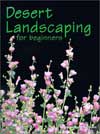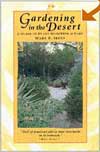Maximize Your Energy Equation


Planning for Saving
Xeriscapes provide great energy saving benefits. A lawn has been shown to reduce home cooling requirements as much as 4 percent compared to a home with no vegetation cover. However, a Xeriscape with good tree, shrub and vine placement can cut cooling costs up to 46 percent.
Plugging the Energy Drain
The major expenditures of energy in landscape maintenance (aside from muscle power) are in water pumping and treatment, and in the manufacture and shipping of fertilizers, insecticides and other gardening chemicals. The energy used to manufacture maintenance equipment such as lawn mowers is also significant.
You can help reduce this energy drain by preserving natural areas to diminish, if not eliminate, the need for additional plantings; by selecting species requiring little or no water, fertilizer or insecticides; and by maximizing the use of ground covers and mulched areas.
More energy-saving tips:
Still More Energy Savings Tips
A concrete block and stucco wall can reach temperatures as high as 112-117 degrees F in direct sunlight. The shade from just one tree reduces that wall temperature by 25 degrees. Shrubs can reduce the wall's temperature by 24 degrees. Together, one large tree and a shrub can knock the temperature down by an average of 28 degrees. Energy-conserving landscaping can cut air-conditioning use by 20 to 40 percent.
When you're building a new home, you will also save energy and dollars by preserving all the natural vegetation that you possibly can. Mature trees make a significant difference in comfort and in property value. Bringing them in after construction is costly and the survival of transplanted trees is always a risk.
However, preserving mature landscaping in new construction areas requires care and planning. Damaged roots or altered soil depth within the drip line (the circular area formed by the tips of the branches) can kill a mature tree, though the dying process may take as long as five years.





